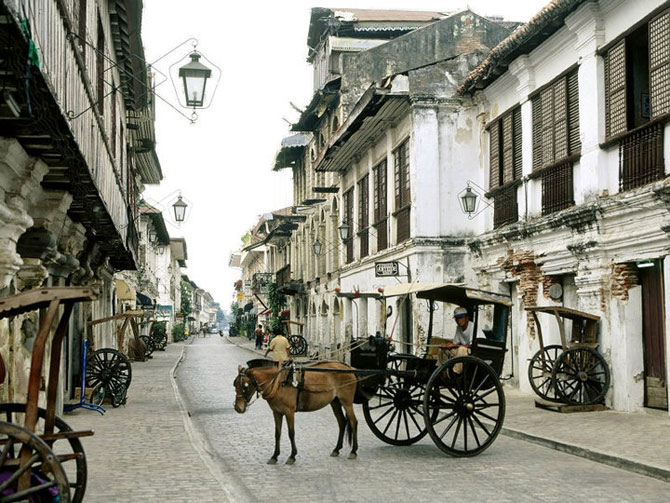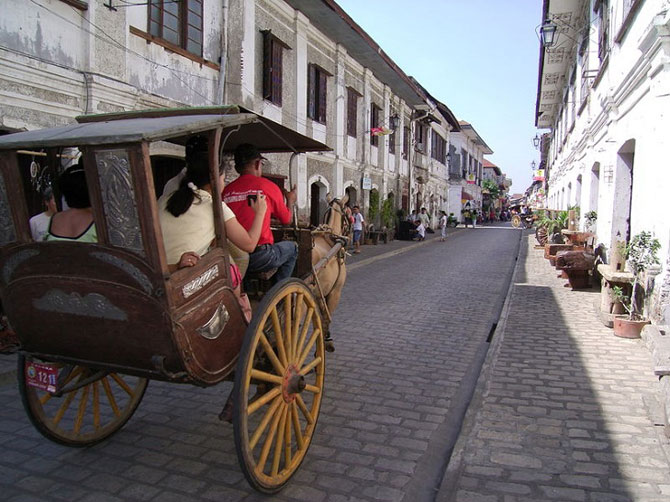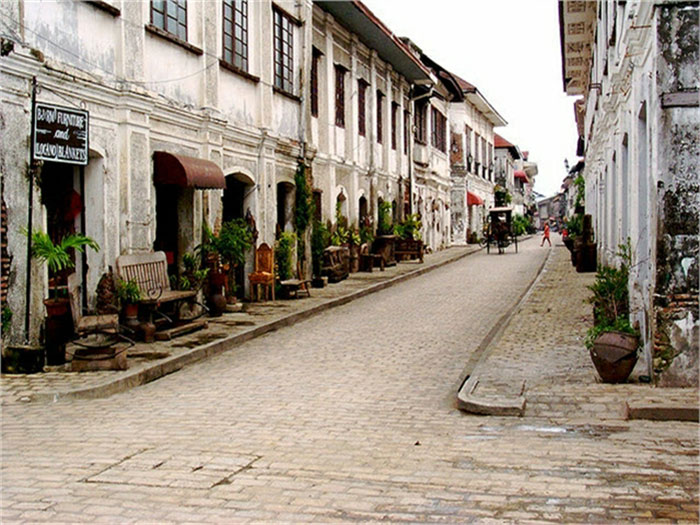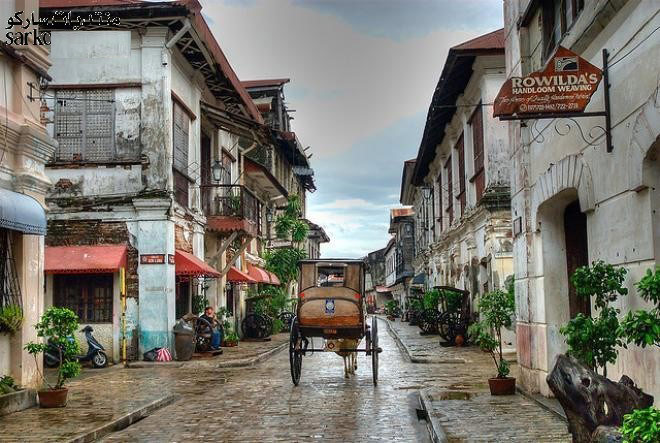Historical town Vigan
The United Nations Scientific, Educational and Cultural Organization has recognized the Philippines' historic town of Vigan as a World Cultural Heritage in 1999.

Vigan is a town in the Ilocos Sur province of the Philippines, which lies on the west bank of Luzon island on the Abra plains and looks at the South China Sea. Vigan town has a population of about 46,000 people with more than 9000 households. The reason Vigan town was recognized by Unesco as a world cultural heritage because it is the colonial city of Spain still holds the most intact today in Asia, besides the unique architectural landscape of Chau. Europe and Asia are harmoniously combined to create the beautiful architecture of the town.

Founded and built in the 16th century during the Spanish occupation of the Philippines, the town of Vigan is an architecturally preserved whole and a testament to a colonial period of Westerners. Spain
Currently the town is divided into 9 districts, Vigan town has 30 agricultural production villages and traditional jobs. Nearly half of the town's total area is still used for agricultural production.

Before the Spaniards appeared and colonized this land, the town of Vigan was formed. However, at that time, the town was just a small village consisting of many stilt houses built of bamboo or wood. In 1572, Juan de Salcedo Conquistador - a newly formed Spanish government of Vigan town named it Villa Ferdinandina . When Mr. Juan de Salcedo Conquistador was appointed as Deputy Governor, he invested in the entire Ilocos province to turn the town of Villa Ferdinandina (that period of Vigan town) from a poor town into a place busy trading.

In the late 17th century, Vigan town changed its new architecture. The city is experimented with architectural style combining traditional cultural elements with advanced construction techniques of Spaniards. The materials used to build the historic town of Vigan are mainly terracotta, wood, limestone, gravel . all taken from the local. The architecture of a typical house starts from the tradition in the Philippines with the influence of regional cultures such as China and Vietnam. It is easy to see the traditional Chinese architecture through the sloping roof tiles on many houses in the town.
 A festival of indigenous people is held outside St Paul's Cathedral in the historic town of Vigan
A festival of indigenous people is held outside St Paul's Cathedral in the historic town of Vigan
In the old town in the town remains intact the old houses that were previously hired by Chinese merchants to live and trade. These houses often have wooden doors outside and windows can slide up and down for ventilation. Chinese merchants around the 17th century often used these houses to do business on the first floor and to build houses on the second floor. In addition, there were many public buildings in Vigan town. shows the multicultural influence of this land. For example, the church of St Paul, the palace of the Archbishop, the Catholic Church or the Cemetery . all have European architecture.
 Historical town Vigan attracts a lot of international tourists because of its ancient and unique beauty
Historical town Vigan attracts a lot of international tourists because of its ancient and unique beauty
The historic town of Vigan is recognized by Unesco as a Cultural Heritage by the following criteria:
Criterion (ii): Vigan Town is the location for the unique combination of construction design between Asia and Europe.
Criterion (iv): Vigan Town has preserved quite intact and preserved the architecture and landscape of an old town with the works combining local tradition and European style.

So far, Vigan town is one of the attractive destinations chosen by many international visitors when coming to the Philippines because it not only brings many beautiful architecture but also an ideal place to visit and relax. . The small, winding small roads, tilted roofs with unique architectural works and the lives of indigenous peoples . all blend together to create a distinct cultural identity only at Vigan. .

- Hoi An Ancient Town is unique in 360-degree photos
- Strange towns in the world
- 9 beautiful Chinese towns
- The most mysterious ghost towns on earth
- 11 famous historical events thought to be real but were fictional
- 5 famous historical places are haunted
- Ghost town emerged from the water
- Beautiful architecture of the world's most colorful town
- Surprised with rare historical series hard to find
- 15 impressive historical moments
- 4 historical facts that many of us don't know about
- The 'winter paradise' makes you ecstatic
 Suzhou classic bonsai garden - China
Suzhou classic bonsai garden - China Chau Nguyen Dynasty
Chau Nguyen Dynasty Thai Son Mountain - World Wonder
Thai Son Mountain - World Wonder Ancient villages of Shirakawa-go and Gokayama
Ancient villages of Shirakawa-go and Gokayama